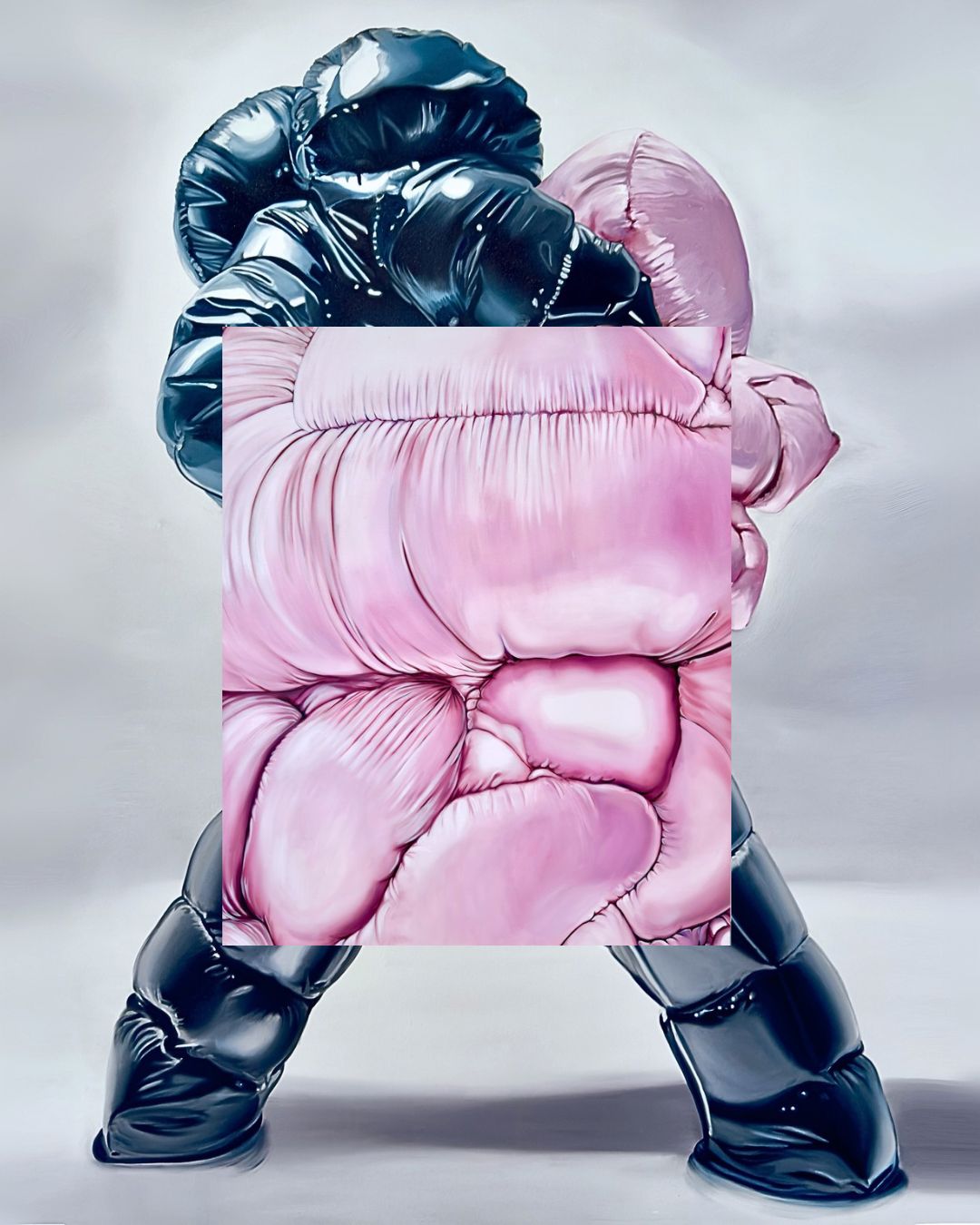
The Real Thing
Charlie Stein
Curated by Beatriz Escudero
20.09.25 – 20.12.25
For better and for worse, we live in the hands of others
Marina Garcés, El compromís
Empty places are such because they are spaces of potential encounter with the other. An other who cannot be reduced “in order to be understood,” nor confined to a mere category, but who must always be able to preserve their identity as a subject, and therefore must be treated as an equal. An identity that is existing, real, and authentic, with its precise particularities that cannot “already be contained in philosophy, theory, or hypothesis.” The subject cannot be reduced to an abstraction—they must be experienced, touched, savored, listened to. (Dean MacCannell, Empty Meeting Grounds).
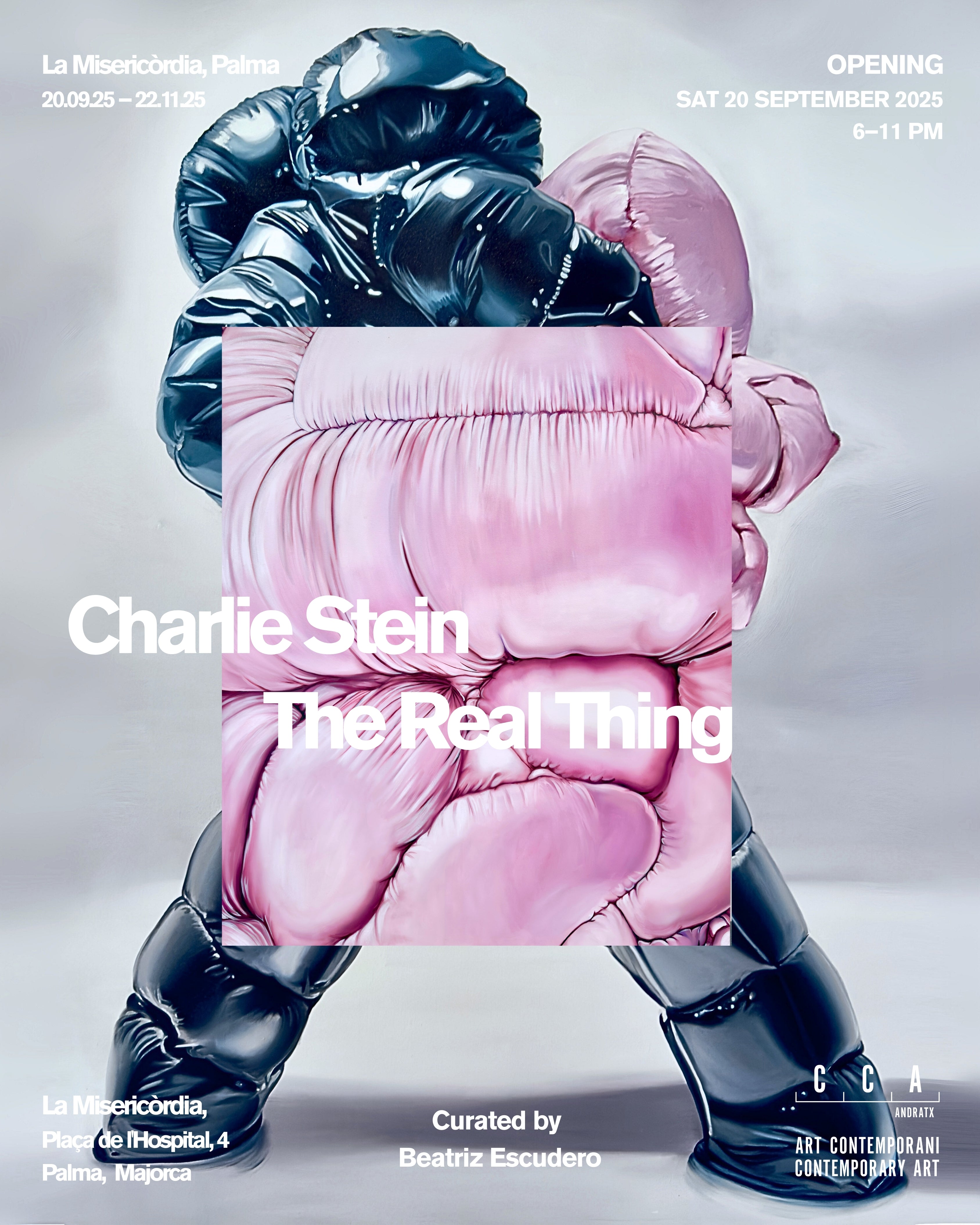
If, as the wise old Huxley once said, each of us are isolated islands in a sea of uncertainty that acts both as a containing and limiting border, and as a current that brings us into contact, then that sea of indeterminacy surrounding us is at once boundary and meeting point, vagueness and possibility—just as Charlie Stein’s garments act as either protective armor or surfaces that enable the experience of touch (Aldous Huxley, The Doors of Perception).
Is it truly possible to ever know the other? To attempt to decipher the thoughts of the person beside us, whose unfathomable interiority we may never fully reach? This duality between the search for what is real and the impossibility of encapsulating the other’s complexity within a category that allows us to name and know them underlies this exhibition.
This new series of works by Charlie Stein, presented in an exhibition at CCA Andratx starting October 02, shows fragments of bodies moving like autonomous beings and confronting one another in a liturgy of gestures that synthesize the encounter between dual beings who, as we see in the selection at La Misericòrdia, merge in what we might identify as a “loving” embrace. At other times, they do so through more violent gestures. A play of opposing textures and colors evokes the encounter between antagonistic positions, between universal metaphysical opposites: love and hate, life and death, friend and enemy, good and evil. The contrast between glossy blacks and fleshy pinks accentuates that constant tension between strength and vulnerability, between desire and violence.
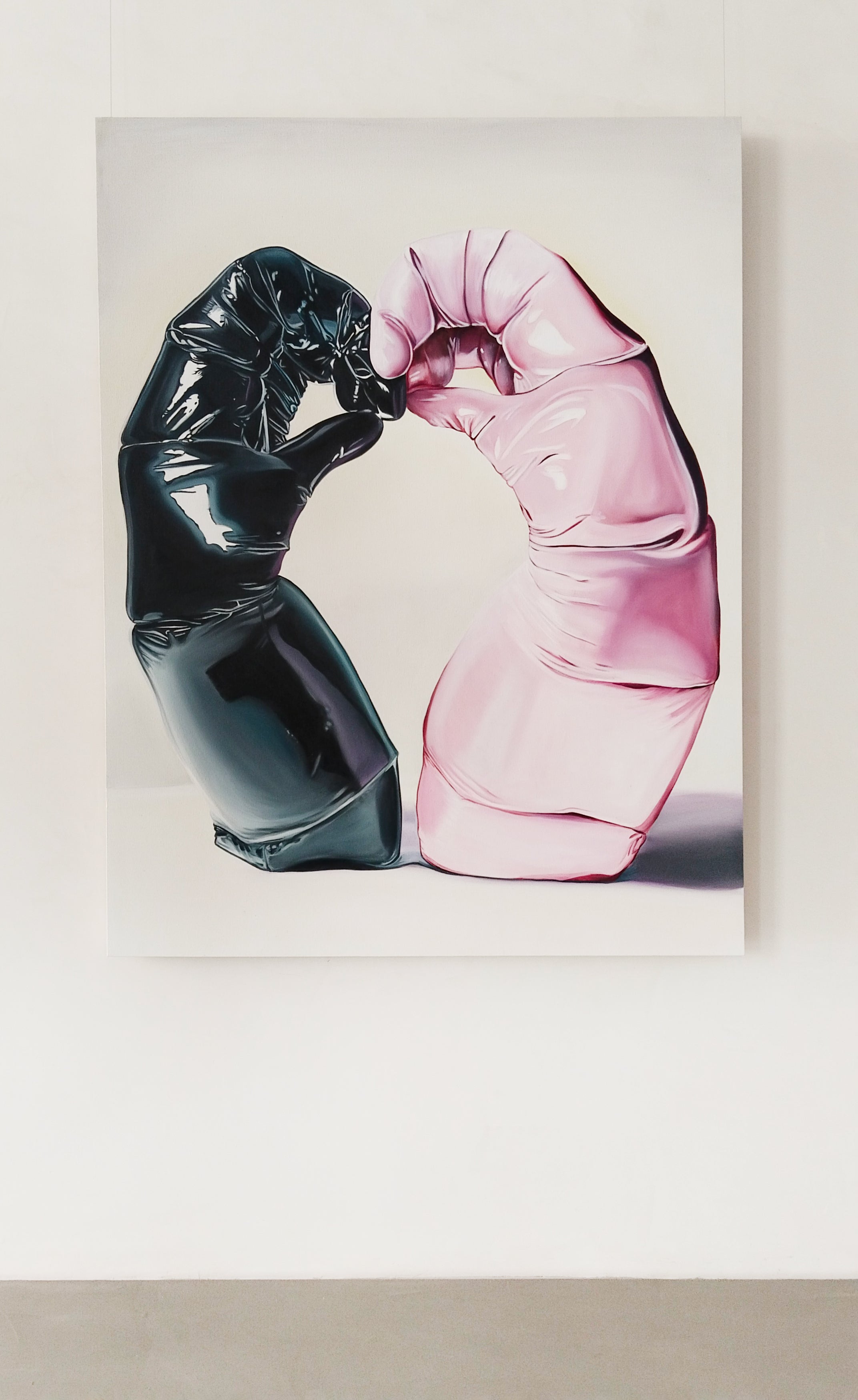
In Stein’s paintings we perceive a surrealist note, luring us in with their juicy,
polished textures, voluptuous and fleshy protrusions, abundant folds and gleams of almost baroque sensuality—only to, once we are close, bite down and pull us into a somewhat darker and more abyssal depth, less obvious, always surprising, and one that connects with an aesthetic subtly winking toward the future. Up close, the work transforms and acquires new qualities: we glimpse twisted, spasmodic, viscous forms, attractive in their aberrant abjection, that trap us and carry us into another dreamlike world where dreams and nightmares merge in an embrace.
Thus we enter Charlie Stein’s pictorial world, where we intuit the fragility of bodies beneath the padded bulk of garments that serve as protective armor. What kind of beings inhabit these glossy acrylic bodies? Do they belong to a human or posthuman world? For them, does shaking hands mean the same thing?
Reflecting on this work from our present and recent past, the artist seems to be asking about the state of our relationships in a moment of maximum uncertainty, when contact with others becomes ever more difficult (or easier). Surrounded by technologies that separate us (or bring us closer), pushed by political polarization, and forced to live in a constant state of anxiety, “being together” seems more and more unthinkable. This extreme randomness hinders the existence of gray areas between black and white—ambiguous positions open to empathic exchange. How have our relationships changed since we all lived united under the same mortal threat in the form of a virus? Can defenselessness be something that unites us with one another? How do we touch again after trauma?
And still, these soft, gleaming bodies twist and manage to touch. They take a stand and commit themselves in a common gesture of affection. We live in a state of permanent mourning for all that we have lost and all the death around us. But in mourning, beyond memory and sorrow, a door opens toward an altered state of sensitivity (Isabel de Naverán, Ritual of Mourning). Perhaps it is this new, eccentric state of consciousness that allows us to perceive what is truly authentic, vital, and to protect it as our most precious treasure. The one that encourages us to take a stand, to commit to an in-between place where we can build the common. To arrive, after pain and general bewilderment, at that moment of “recognition where we can be face to face with the other truly as we are, stripped of all artifice and falsehood, naked and without shame” (bell hooks, All About Love).
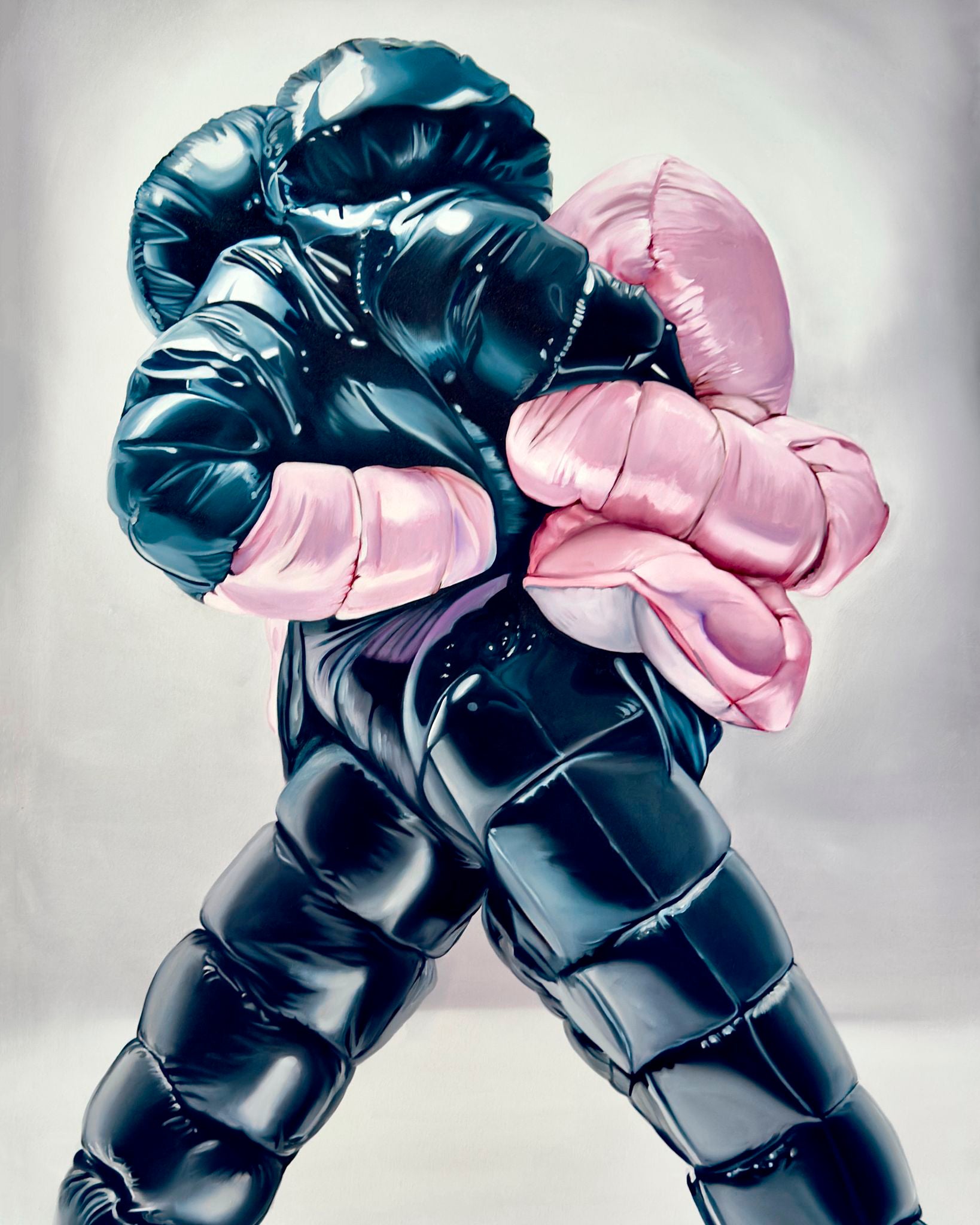
The exhibition The Real Thing, presented at La Misericòrdia in Palma, underscores the paradox of authenticity in an age of infinite simulations, where bodies, images, and markets attempt to fabricate an aura. Between Russell Morris’s 1969 anthem and today’s algorithmic sublime, the artist asks what still persists in a world of ever-diminishing physical contact and ever-increasing touchscreens.
Charlie Stein’s artistic practice investigates the representation of the body as an ambiguous territory, where the organic and the artificial intertwine in a continuum of aesthetic and emotional tensions. In this new series, created specifically for this exhibition at La Misericòrdia on the occasion of La Nit de l’Art 2025, the forms unfolding on her canvases evoke both bodily folds and synthetic surfaces, situated on the threshold between the human and the posthuman. The figures seem trapped in an embrace that is also a struggle, an intimate gesture that is at once unsettling.
Stein’s work invites us to closely examine the limits of contemporary body representation: a body manipulated, extended, traversed by technological fantasies and emotional impulses. Beyond the figurative, what emerges is a space of friction and desire, where the beautiful and the grotesque coexist inseparably.
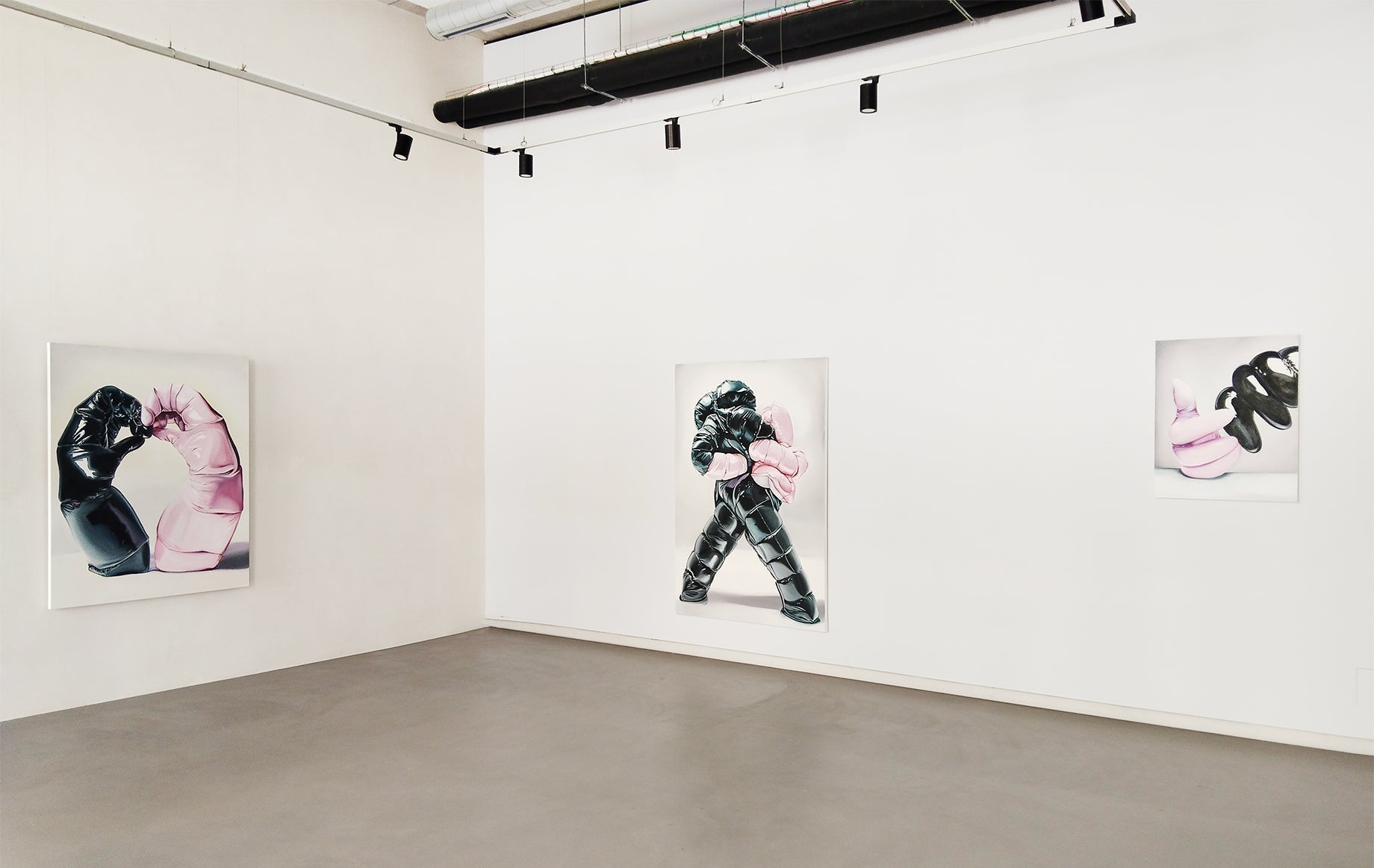
Charlie Stein is a multidisciplinary artist, writer, and cultural theorist. She currently combines her artistic practice with teaching painting and drawing at HfBK Hamburg and has been a visiting professor at CalArts, California Institute of the Arts, Los Angeles. Stein has participated in national and international exhibitions, such as Manifesta 11, Sinopale, the Bingen Sculpture Triennial, as well as exhibitions in museums across Europe and Asia. Her work has also been included in the ISCP x Almine Rech benefit auction.
With a background in sociology and fine arts, Stein explores transitions between physical and virtual space, between craft and machine, and between individual and systemic structures. Her practice operates at the intersection of contemporary art, technology, and critical theory. She addresses themes such as corporeality, intimacy, digital surrealism, and digital aesthetics, working in painting, installation, text, and AI-based collaborations.
Plan your visit
Just 30 minutes away from beautiful Palma
Estanyera 2, 07150 Andratx, Mallorca, Spain
